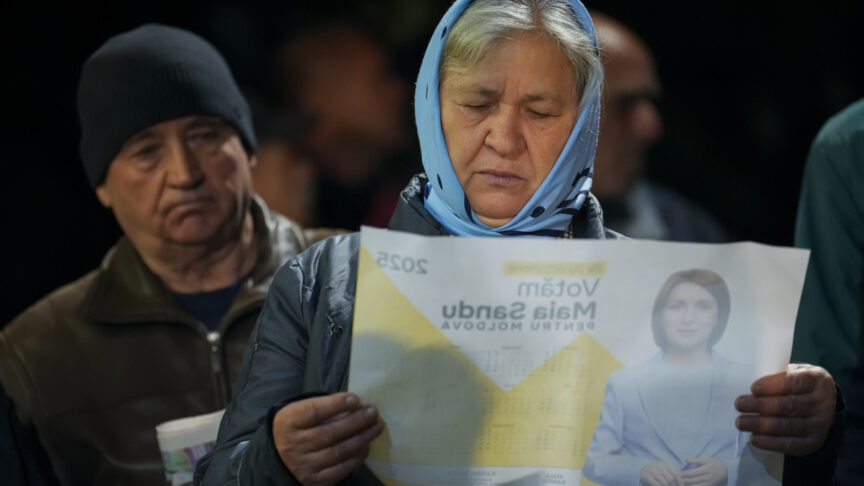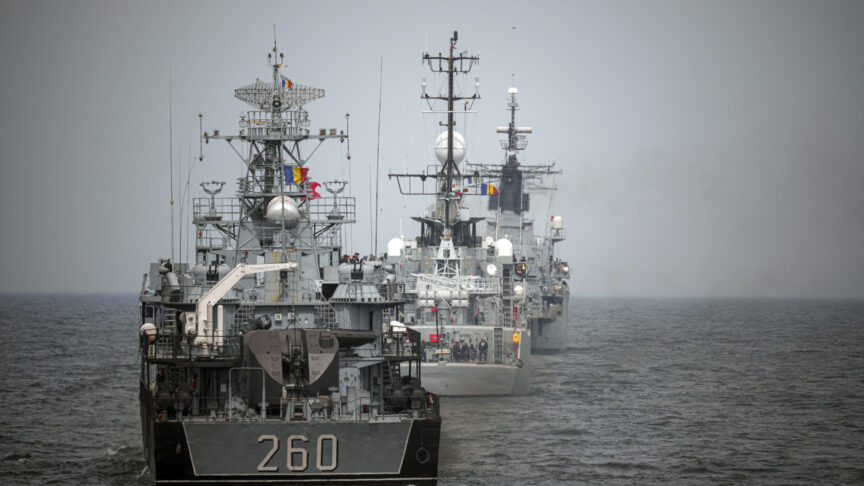Russia’s nuclear deterrence principles: what they imply, and what they do not
Russia’s nuclear policy has long been shrouded in secrecy. But a newly published presidential decree on nuclear deterrence clarifies some issues while still leaving ample room for speculation
The Kremlin took the unprecedented step last week of publishing a presidential decree setting out Russia’s policy principles on nuclear deterrence. The six-page decree sets out brief remarks on Russia’s nuclear deterrence posture, such as objectives, threshold (the point in a conflict at which nuclear weapons would be used), and command authority (which includes who decides on launching a nuclear attack). It has come as a surprise to see the paper published on the record. In the past, the relevant decree on the principles of nuclear deterrence was kept classified. The only public statement on nuclear deterrence was a standard sentence repeated in Russia’s military doctrine and other documents stating that Russia would only resort to nuclear weapons if it was attacked by weapons of mass destruction, or if an attack threatened the very existence of the state.
Such general wording, of course, left ample room for speculation. Some observers interpreted Russia’s reluctant communication on nuclear matters in the most careful, conservative, and defensive way, disbelieving that Russia would ever consider a launch-on-warning posture. Now, thanks specifically to article 19a of the newly released document, we know it does have this posture.
Other observers in the past argued that Russian military thinking’s focus on offence and pre-emption would likely leave a mark on nuclear matters as well and concluded that Russia had adopted an ‘escalate to de-escalate’ doctrine. According to this view, Russia would resort to the pre-emptive first use of a non-strategic nuclear weapon once the Russian army had achieved its operative goals to end the war on Moscow’s terms. While the existence of such an ‘escalate to de-escalate’ doctrine and other details on Russia’s potential use of nuclear weapons was contested in the past, the final sentence of Article 4 of the doctrine comes closest to answering this question. It states that, once a war has started, nuclear deterrence policy is to seek to prevent it from escalating further, or from being terminated on terms unfavourable to Moscow. This is a short version of what in Russian military literature is termed ‘escalation control’. Escalation control implies that threats, demonstrations of strike capabilities, and inflicting “calibrated damage” on the enemy (which may, but does not have to, include nuclear weapons) should contain, localise, and if possible terminate a war on Moscow’s terms. This is more flexible and adaptable than most previous assumptions on Russian ‘escalate to de-escalate’ or ‘escalate to win’ concepts. However, flexible escalation control is no less challenging for NATO, as the final result may still be a pre-emptive, limited nuclear strike. One needs to stress that Russia and the West have fundamentally different traditions and perceptions on what ‘defensive’ military operations are and where ‘pre-emption’ on a ‘legitimate’ security threat transitions into ‘aggression’. For this reason, nothing in the decree precludes Russia embarking on ‘escalate to de-escalate’.
The practical backdrop remains to dissuade the US from intervening in a war Russia has started with an immediate non-aligned neighbour, particularly Ukraine.
The practical backdrop to Russian deliberations on escalation control of course was, and remains, to dissuade a large nuclear power – the US – from intervening in a war Russia has started with an immediate non-aligned neighbour, particularly Ukraine. A head-on confrontation with NATO is not Russia’s primary concern, but could develop out of another crisis. In such a confrontation, nuclear weapons and their dissuasive potential would play a major role. But as such scenarios would hardly develop according to a script or pre-planned decision, Article 18 will be the most relevant: it sets Putin as the sole decision-maker about the use of nuclear weapons. The decision of whether or not to use them would depend on how he perceives the circumstances and whether, if, and in what contexts, threats are made or weapons used. This said, the decree does not differentiate between strategic and non-strategic nuclear weapons and does not at any point imply or hint that the Russian armed forces would rely on the employment of nuclear weapons to fulfil tactical or operative tasks assigned. In this regard, all nuclear weapons – regardless of range and yield – are ‘strategic’ in terms of being a political tool to influence political decision-making processes.
Article 19 deliberates on the conditions under which nuclear weapons could be released. It explicitly mentions a ‘launch on warning’ posture. This is a signal to the US that conventional or low-yield re-entry vehicles (the latter are in development) of intercontinental missiles would be treated as a full-scale attack and that Washington should therefore not think of employing them in a tactical or limited attack close to Russia’s borders. Paragraph 19c states that Russia would retaliate using nuclear weapons against a conventional attack that impedes Russian nuclear forces or their command structure; this provision emulates the 2018 US nuclear posture review. But, deliberate or not, the paragraph is very imprecise, as it also does not distinguish between strategic and non-strategic nuclear forces. The proliferation of dual-use platforms that has taken place in recent times across the Russian armed forces would allow nuclear ‘retaliation’ for any sort of conventional strike into Russia’s territory. In order to conventionally defend NATO territory in case of a Russian attack, such deep strikes would still be necessary.
The Russian decree does not contain any detailed provisions on force structure, weapons systems (future or present), force modernisation, or references to other nuclear powers. Much detail is lacking from what one might normally expect to see in a nuclear doctrine. Article 15 states merely that nuclear deterrence needs to be adaptable, and should leave the enemy guessing about the time, scale, and manner of the use of nuclear weapons. It also says that Russia intends to maintain the minimal force required to achieve its tasks. Article 10 states that the Russian nuclear forces intend to inflict unacceptable damage on an enemy under any condition. While previous documents – like the military doctrine of 2000 – talked of calibrated damage, the phrases in this paper are less ambitious. If one assumes counter-value targeting (attacking cities) as an underlying assumption, Russia may be able to inflict ‘unacceptable’ damage more easily than trying to calibrate strikes according to the threat situation and American defences.
Taken together, all these provisions seem surprisingly minimalist. It may well be that Russia intends to signal to the United States that, if the American-Chinese arms race takes off, Moscow does not intend to follow suit and “spend itself into oblivion”, as US assistant secretary for terrorist financing in the Treasury, Marshall Billingslea, put it. Russia is hardly likely to publicly admit that in the 21st century it will most probably be a secondary nuclear power. But, in fact, it does seem to be adapting to this role.
Finally, Article 3 notes that Russia’s nuclear deterrence is flanked by other state measures to achieve its goals, including diplomatic and “information policies” (propaganda). The publication of the doctrine and the content of Article 3 effectively represent the firing of the starting pistol on a new ‘information campaign’ in the West: expect to soon see an information operation that aims to inflate the purported capabilities of Russia’s nuclear forces and induce fear (such as the new “Wunderwaffen”, presented in March 2018), and new diplomatic overtures in the fields of arms control, in particular designed to split the alliance. At least on the latter, Putin may get assistance from the White House: Trump’s clumsy and undiplomatic handling of the INF and Open Skies issues provide more opportunities to exploit than any Russian diplomat would have ever dreamed of creating.
With Trump also unilaterally reducing America’s military presence in Europe (in Germany in particular), transatlantic relations have reached a new low. However, the new Russian policy principles on nuclear deterrence also underpin the existential role the US plays to counterbalance the Russian military in Europe, and in particular nuclear capabilities. For the foreseeable future, France will be neither able or willing to replace the United States’ nuclear balancing role, contrary to occasional wishful thinking about this in Germany. For now, Europeans hope that the November 2020 election will relieve them of their troubles with Trump. But there is no plan B if that election does not deliver their much hoped-for anticipated result.
The European Council on Foreign Relations does not take collective positions. ECFR publications only represent the views of their individual authors.


